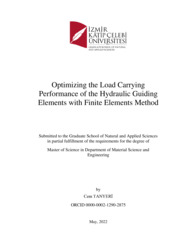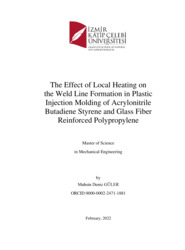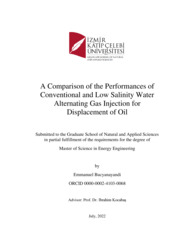Filtreler
Filtreler
Bulunan: 29 Adet 0.001 sn
Yayın Tarihi : 2022 ✕Yayın Dili : eng ✕Yayıncı : Graduate School of N ... ✕Koleksiyon : FEN BİLİMLERİ ENSTİT ... ✕
Koleksiyon [2]
Ambargo Durumu [1]
Tam Metin [1]
Eser Sahibi [20]
- Batıkan Kandemir, Miray 1
- Bucyanayandi, Emmanuel 1
- Can, Yağmur 1
- Candemir, Adem 1
- Coşkun, İhsan 1
- Ertamay, Selin 1
- Güler, Muhsin Deniz 1
- Gümüş, Ümmühan 1
- Hakyemez Çatiner, Deniz 1
- Höke, Milas Ceren 1
- Kale, Didem 1
- Kalkan, Şevket Onur 1
- Karaman, Merve 1
- Karayaman, Goncagül 1
- Kaya, Büşra 1
- Kuran, Mutahhar 1
- Köşker, Merve 1
- Ok, İzel 1
- Olcay, Başak 1
- Ruhbaş, Büşra Yüksel 1 Daha fazlası Daha az
Tür [2]
Yayın Tarihi [1]
Kayıt Giriş Tarihi [2]
Tez Danışmanı [20]
- Mehmet Emre Güler 2
- Ozan Karaman 2
- Sedat Yalçınkaya 2
- Sercan Acarer 2
- Özgür Seydibeyoğlu 2
- Şerafettin Demiç 2
- Ahmet Aykaç 1
- Ali Ettehadi 1
- Aydın Ülker 1
- Barış Bıdıklı 1
- Didem Şen Karaman 1
- Fatih Cemal Can 1
- Levent Aydın 1
- Lütfullah Gündüz 1
- M. Özgür Seydibeyoğlu 1
- Mehmet Çevik 1
- Merih Palandöken 1
- Nermin Topaloğlu Avşar 1
- Onur Ertuğrul 1
- Savaş Şahin 1 Daha fazlası Daha az
Yayın Dili [1]
Konu Başlıkları [20]
- Malzeme bilimi 3
- Materials science 3
- Makine mühendisliği 2
- Mechanical engineering 2
- Akışkanlar dinamiği 1
- Aluminum 1
- Alüminyum 1
- Betonarme kiriş 1
- Biyogaz 1
- Biyomedikal mühendisliği 1
- Coal mine - Turkey 1
- Composite materials - Mechanical properties 1
- Dental materials 1
- Dental materyaller 1
- Diş İmplantları 1
- Electrical and Electronics Engineering 1
- Elektrik mühendisliği 1
- Elektrik ve Elektronik Mühendisliği 1
- Elektronik mühendisliği 1
- Engineering - Materials Science 1 Daha fazlası Daha az






